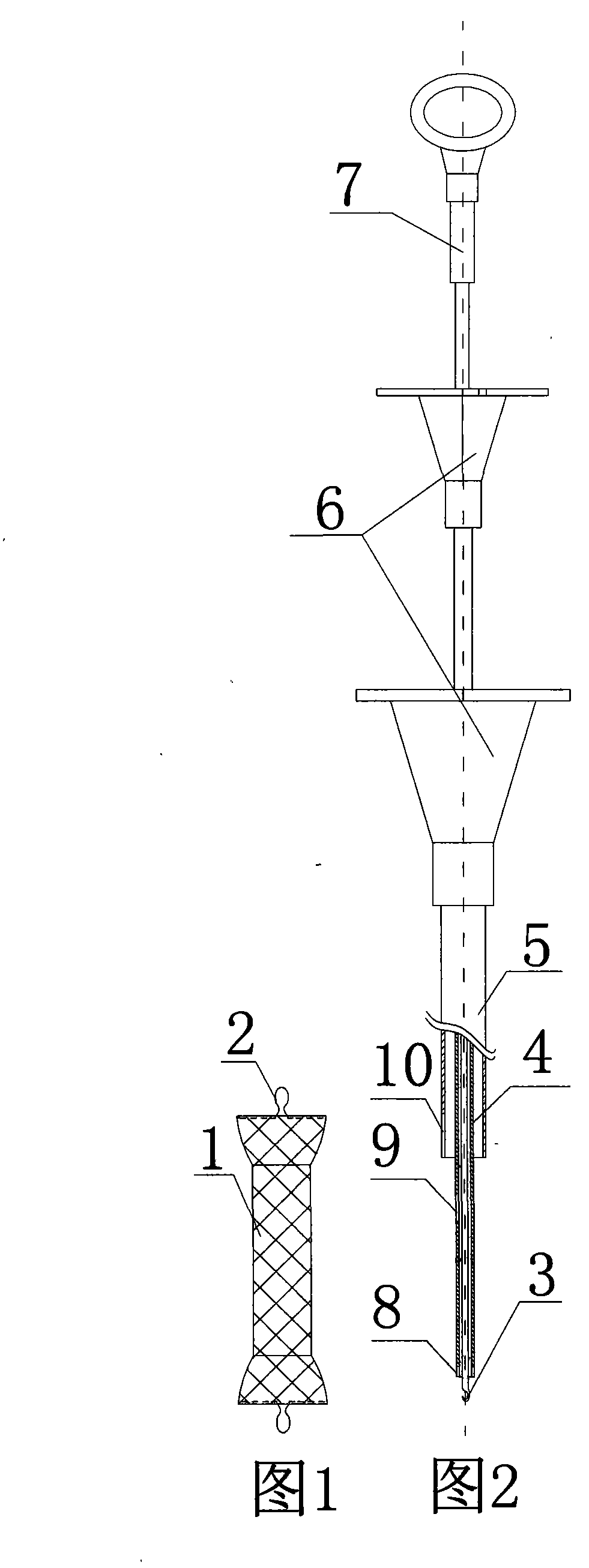Placing and recovering device of non-memory alloy esophageal stent
A memory alloy and recovery device technology, applied in the field of medical devices, can solve the problems of increasing the patient's treatment cost, difficulty in swallowing food, and complicated operations, and achieve the effects of reducing the treatment cost, shortening the operation time, and reducing the pain of the patient.
- Summary
- Abstract
- Description
- Claims
- Application Information
AI Technical Summary
Problems solved by technology
Method used
Image
Examples
Embodiment Construction
[0019] The present invention will be described in further detail below in conjunction with the accompanying drawings.
[0020] A device for placing and recovering a non-memory alloy esophageal stent according to the present invention, its structure includes an outer sleeve 5, an inner sleeve 4, a recovery hook and a non-memory alloy esophageal stent 1, the rear end of the recovery hook is provided with a hook handle 7, and the front end is provided with a The hook head 3, the hook head 3 parts are inserted into the inner casing 4, the inner casing 4 is inserted in the outer casing 5, the front end of the inner casing 4 has at least one gap 8, and the middle of the inner casing 4 has at least one opening There is a long hole 9, at least three slits 10 are opened on the front end of the outer sleeve 5, the rear ends of the outer sleeve 5 and the inner sleeve 4 are provided with horn-shaped handles 6, and the upper and lower ends of the non-memory alloy esophageal stent 1 are prov...
PUM
 Login to View More
Login to View More Abstract
Description
Claims
Application Information
 Login to View More
Login to View More - R&D
- Intellectual Property
- Life Sciences
- Materials
- Tech Scout
- Unparalleled Data Quality
- Higher Quality Content
- 60% Fewer Hallucinations
Browse by: Latest US Patents, China's latest patents, Technical Efficacy Thesaurus, Application Domain, Technology Topic, Popular Technical Reports.
© 2025 PatSnap. All rights reserved.Legal|Privacy policy|Modern Slavery Act Transparency Statement|Sitemap|About US| Contact US: help@patsnap.com



